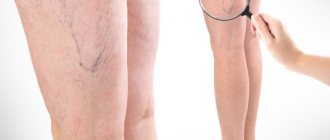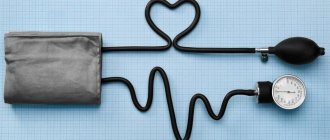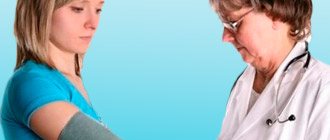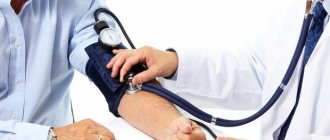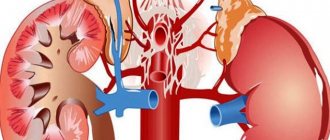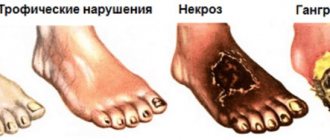The main task of the veins is to deliver blood back to the heart to enrich it with oxygen. Veins literally entwine the body, but in most cases they are almost invisible. However, when barely visible bluish veins protrude above the skin and become noticeable, many begin to worry. Indeed, protruding veins can signal a disease, but in most cases there is no cause for alarm. Find out when your veins are considered normal and when you should see a doctor immediately.
Too thin and light skin
The content of melanin pigment, which is responsible for skin tone, is different for all people. The lighter the epidermis, the more visible the veins are. Their visibility is also affected by the density of the skin. That is why the veins are clearly visible where they are thinnest: on the back of the hands, elbows and knees, neck and upper chest.
The vascular network is especially noticeable in people with light, almost transparent skin of the Celtic or Northern European type. In tanned and dark-skinned people, the veins are hardly noticeable, but can be felt when touched. With age, the epidermis becomes thinner, so in older people the veins are not only clearly visible, but also clearly protrude, resembling tree roots.
Sports loads
During intense exercise - pull-ups, push-ups, machine exercises or weight lifting - the veins experience increased stress due to increased blood flow. Working muscles require additional oxygen, forcing the circulatory system to operate at maximum capacity. The veins swell, increase in size and begin to clearly appear under the skin. The same effect can be seen when carrying heavy objects. The longer and more intensely the muscles work, the more the veins protrude.
At rest, the vascular network gradually smoothes out and becomes less noticeable. However, if a person experiences overload constantly, veins may be noticeable even in the intervals between workouts.
Treatment
If external signs are accompanied by pain, then a medical examination is necessary. For phlebitis, antibiotic therapy, anti-inflammatory treatment and compresses are prescribed. Protruding veins are not always a symptom of a disease and can be treated with cosmetic procedures.
Treatment methods:
- Sclerotherapy . If a vein is swollen, a solution is injected into it to form a scar. The blood flow is redirected to a healthy vessel.
- Laser therapy . Treatment involves using radio waves or laser beams to close the blood flow.
- Phlebectomy . Using small incisions, the damaged venous vessel is removed.
Pregnancy
The circulatory system of a pregnant woman works with double load: it must provide oxygen not only to the expectant mother, but also to the growing fetus. As it develops, the blood flow becomes more intense, the woman’s veins expand and appear under the skin. They are especially noticeable on the limbs, neck, and growing abdomen.
The slightest load contributes to additional expansion of the veins. What happens next depends on genetic characteristics: if the walls of the vessels are dense and the body receives enough oxygen, the veins narrow slightly at rest.
Compression stockings and special bandages will help reduce the load. After childbirth, the state of the circulatory system stabilizes; if this does not happen, a phlebologist is needed.
Why are veins visible all over my body?
Why did veins become visible all over my body?
– this question often worries people of all ages. The reason for the appearance of blood vessels on the surfaces of the body can be various factors. It is difficult to say whether you should panic about this or whether you need to see a doctor for help.
Reasons for appearance
If veins suddenly become visible throughout the body, then there are a couple of reasons for this. The main one is a common disease - varicose veins.
But there are other circumstances that lead to similar problems:
- Failure to comply with nutritional and drinking rules. Overeating, drinking large amounts of liquid - all this leads to consequences. Normalizing nutrition and fluid intake will help correct the situation.
- Extreme weight loss or strict diet. Weight loss leads to the fact that the veins on the body become noticeable, the vessels are visible through thin skin, provided that the fat layer has decreased in size.
- Overloads of the physical plane. In such a situation, blood vessels appear in those places that are subject to stress, but they can also appear throughout the body. It’s worth reducing the amount of training, resting more, and the veins will disappear.
- Taking certain medications. More often than those that increase the level of arterial or intracranial pressure. The corresponding notes should be in the “side effects” column. In such a situation, the drug is discontinued or replaced with another.
- Overheating and dehydration. When veins are clearly visible throughout the body, the body suffers from lack of fluid and overheating. You may notice that the vessels “swell” after visiting a steam room, sauna or bathhouse, as well as as a result of a long stay on the beach, under the scorching rays of the sun.
- Diseases of the heart and blood vessels. Pathologies associated with impaired blood flow lead to the skin in a certain area turning pale or even blue, and then veins appear on it. In this case, other accompanying symptoms should be present: heart rhythm disturbances, weakness, dizziness.
- The period of pregnancy and lactation in women. At this time, the body is exposed to stress, the appearance of blood vessels is considered normal. It is also associated with hormonal changes in the body. Over time, everything goes away on its own, the veins disappear after childbirth or completion of lactation.
- Impaired blood flow in a certain area. When veins appear on a leg, arm or other part of the body. It is necessary to consult a phlebologist to determine the exact cause of such problems.
- In children, blood vessels appearing on the head, face, and temporal region cause concern. This may indirectly indicate high intracranial pressure. It is worth showing the baby to a neurologist and conducting certain examinations.
List of other factors:
- pathologies in the kidneys, with impaired urine outflow;
- diseases of the hematopoietic system (in some cases);
- heart pathologies, arterial hypertension, high blood pressure;
- taking hormonal medications, including OK.
The causes of the phenomenon are various; they are associated with diseases of the internal organs. It is not possible to independently determine the cause.
What to do
When blood vessels and capillaries become visible on the body, you should adhere to certain rules of conduct:
- Refuse to visit a hot bath, steam room, sauna - this will aggravate the situation and lead to complications.
- Do not drink alcohol, drinks containing caffeine, avoid salty and spicy foods - this will help avoid increasing blood pressure levels.
- Provide the body with rest if it suffers from systematic overload associated with increased physical activity.
If a person is taking medications, then they should be stopped before consulting a doctor. A phlebologist will help you understand the situation and prescribe appropriate treatment.
What to do on your own:
- If the veins suddenly appear throughout the body, the cold will calm them down; you can apply a cold compress to the area of the body and wipe the skin with a piece of ice. But taking a contrast shower or a cold bath is not recommended, as this can cause a heart attack and death.
- If the veins “pop out” on the legs, they are wrapped with an elastic bandage. The limbs should not be overtightened; the fixation is moderate.
- Heparin ointment is applied to certain areas of the body or limbs, and products based on horse chestnut are used - these drugs strengthen the walls of blood vessels.
- Avoid wearing tight, uncomfortable shoes and heels. This will help restore blood flow in the extremities and normalize it.
- Avoid staying in one position, as this leads to stagnation. Moderate physical activity will help change the situation, but strength training is abandoned due to its complexity.
- They resort to massage procedures: they knead their legs with their hands to increase the flow of blood through the veins. The actions are easy, without pressure or force.
- It is not prohibited to use warming ointments; they stimulate blood circulation, but provided that the cause of the problem is not considered to be overheating.
The patient should be warned against using tablets, injections and other medications - they can aggravate the situation and cause a sharp deterioration in well-being. Therefore, medications are used as prescribed by a doctor.
Self-treatment involves minimizing risks; you can also drink decoctions of medicinal herbs:
- Lingonberry.
- Rose hip.
- Bearberry.
Plants stimulate the functioning of the kidneys and heart, and remove excess fluid from the body.
Conclusion
Evaluating the photo will help you understand what “swollen veins” are, but don’t rush to conclusions. The phenomenon may be temporary and go away on its own without leading to serious consequences or complications.
Doctors warn! Shocking statistics - it has been established that more than 74% of skin diseases are a sign of parasite infection (Accarida, Giardia, Toxocara).
Worms cause enormous harm to the body, and the first to suffer is our immune system, which should protect the body from various diseases.
The head of the Institute of Parasitology shared the secret of how to quickly get rid of them and cleanse your skin, it turns out that it’s enough... Read more...
But if the situation repeats and worries you on a regular basis, you will need to consult a doctor and carry out a number of diagnostic procedures.
Source: https://gribkovye-zabolevaniya.com/pochemu-po-vsemu-telu-stali-vidnyi-venyi.html
Reduction of fat layer
A natural reduction in the layer of subcutaneous fat is typical for older people, as well as those who have been on a low-calorie diet for a long time. The thinner the subcutaneous layer, the more noticeable the veins. A condition is considered normal when veins are noticeable on the back of the arms, neck, and legs. In athletes, during the drying period, the subcutaneous layer of fat is reduced to a minimum, and a venous network is clearly visible on the muscles of the whole body. The thinner and lighter the skin, the more noticeable the blue veins. With a fat content of less than 7%, they turn into real ropes and look scary.
The disappearance of fatty tissue is accompanied by increased dryness of the skin, the appearance of fine wrinkles, a constant feeling of cold and chills. However, this condition is not considered a pathology: the problem will be solved by a more high-calorie diet with the inclusion of unsaturated fats from meat, fish, nuts, and vegetable oils in the diet.
Risk group
There are certain categories of people who are at risk of developing varicose veins.
These include:
- athletes who lift weights or track and field athletes;
- smoking women after 35 years. Scientists have long proven the relationship between smoking and varicose veins in women. Smoking in the opposite sex provokes the development of the disease to a lesser extent;
- people, as part of their professional activities, who stand and walk a lot (salesmen, postmen, hairdressers, etc.);
- overweight people;
- pregnant and lactating women;
- women taking combined oral contraceptives;
- people with heredity associated with this disease;
- elderly people suffering from heart disease, diabetes;
- women who constantly wear narrow shoes with high heels.
Symptoms of diseases
In most cases, protruding veins are just a visual problem that can be solved with proper nutrition, reasonable dosage of exercise, and proper rest. However, sometimes a suddenly overgrown vascular network signals serious diseases.
If the blue veins are concentrated in the calves and thighs, the legs become tired and swollen, and varicose veins are possible in the initial stage. Dark spots on the limbs, sudden ulcers and shortness of breath are clear symptoms of thrombophlebitis. An increase in temperature and severe swelling can signal various vascular and cardiac pathologies.
Do not delay your visit to the therapist: he will analyze the patient’s condition and issue a referral to a phlebologist.






